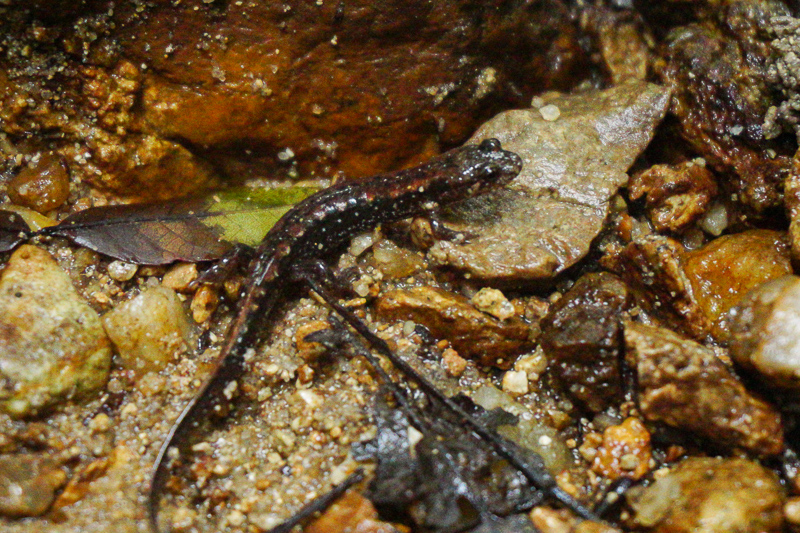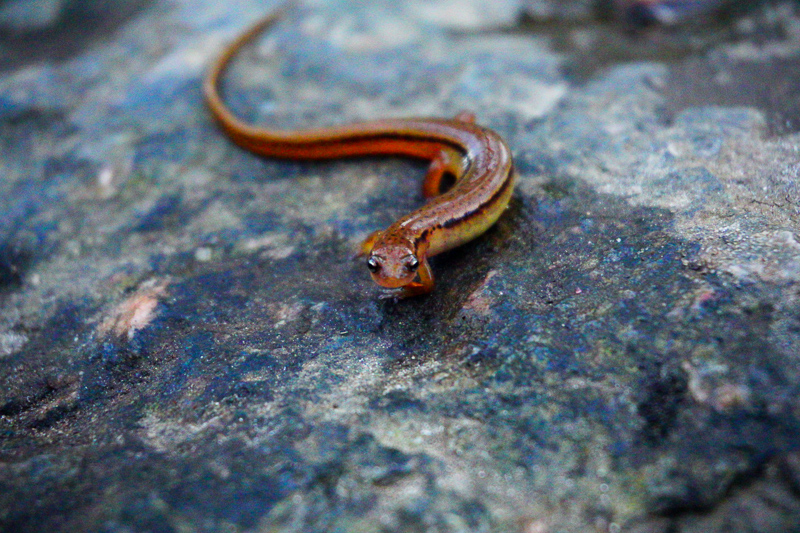Ask a Naturalist: Salamanders
For immediate release ‐ December 17, 2020
Ask a Naturalist
Contact: Jessica Wackes, 919.707.9850. Images available upon request
In 2016, Raleigh hosted a week-long conference devoted to wildlife research, management, and conservation. During a break, I went for a walk in the woods with a few friends including a visiting scientist from Australia. As we walked, we paused to look under rocks and rotten logs for salamanders. After a few tries, we found a White-spotted Slimy Salamander (Plethodon cylindraceus). This is a common salamander in the Piedmont, but the Australian scientist reacted like it was the rarest animal on the planet. Australia has no native salamanders and this was the first time she had seen one in real life. Her reaction was of pure joy and excitement.
Recently, we’ve received several salamander questions via “Ask a Naturalist.” These submissions bring back that memory for me and the joy of discovering something new. I’m also reminded about how special it is to live in the state with so many unique salamanders. The southern Appalachian Mountains, and North Carolina in particular, is home to the highest salamander diversity in the world. North Carolina alone has at least 64 species of salamanders. The exact number of species continues to change as researchers use DNA to discover new species.
 Juvenile Northern Dusky Salamander (Desmognathus fuscus). Photo from Uwharrie National Forest; submitted to Ask a Naturalist by Ralph Cooper.
Juvenile Northern Dusky Salamander (Desmognathus fuscus). Photo from Uwharrie National Forest; submitted to Ask a Naturalist by Ralph Cooper.
Where they live, salamanders are some of the most numerous vertebrates on the forest floor. They are important components of the food web, acting as both predator and prey. Humans also use salamanders as environmental indicators. Their presence or absence from a system can help scientists determine water quality and overall ecosystem health. Salamanders have also been used to study evolution and their ability to regrow tissue may have human health implications.
Salamanders are scientifically important, but they’re also just really fun to find and admire. Cooler evenings in the spring and fall are great times to look for salamanders, especially after or during a rainfall. Given their permeable skin, salamanders prefer these conditions. You won’t find them out basking in the sunlight like a lizard. During the winter, terrestrial salamanders typically escape the cold by moving underground into crevices, holes, or small mammal burrows. They may also burrow under organic material such as dead leaves or fallen trees. Some salamanders, such as the aquatic mudpuppy, may remain active all winter.
 Two-lined Salamander (Eurycea wilderae). Photo from Pisgah National Forest; submitted to Ask a Naturalist by Ralph Cooper.
Two-lined Salamander (Eurycea wilderae). Photo from Pisgah National Forest; submitted to Ask a Naturalist by Ralph Cooper.
Unfortunately, in many areas salamanders, and amphibians in general, are harder to find. They are faced with a growing number of threats. Disease and habitat loss are the primary factors causing global amphibian declines. Climate change will likely affect amphibians as well. You can do your part by creating habitat for salamanders. For example, placing logs and brush in wet areas of your yard may offer suitable habitat for salamanders. Alternatively, you can support wetland protection as well as the scientists who study salamanders and their habitats. With some help, salamanders will continue to inspire and fascinate visiting Australian scientists and North Carolinians alike.
By Greg Skupien, Naturalist Center Curator
Previous Ask a Naturalist: Sponge Blog | Older Ask a Naturalist posts

